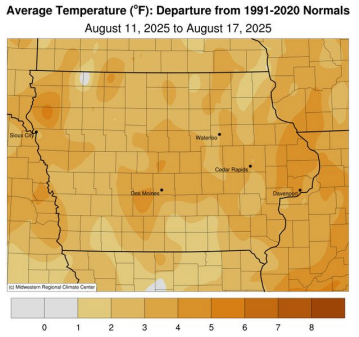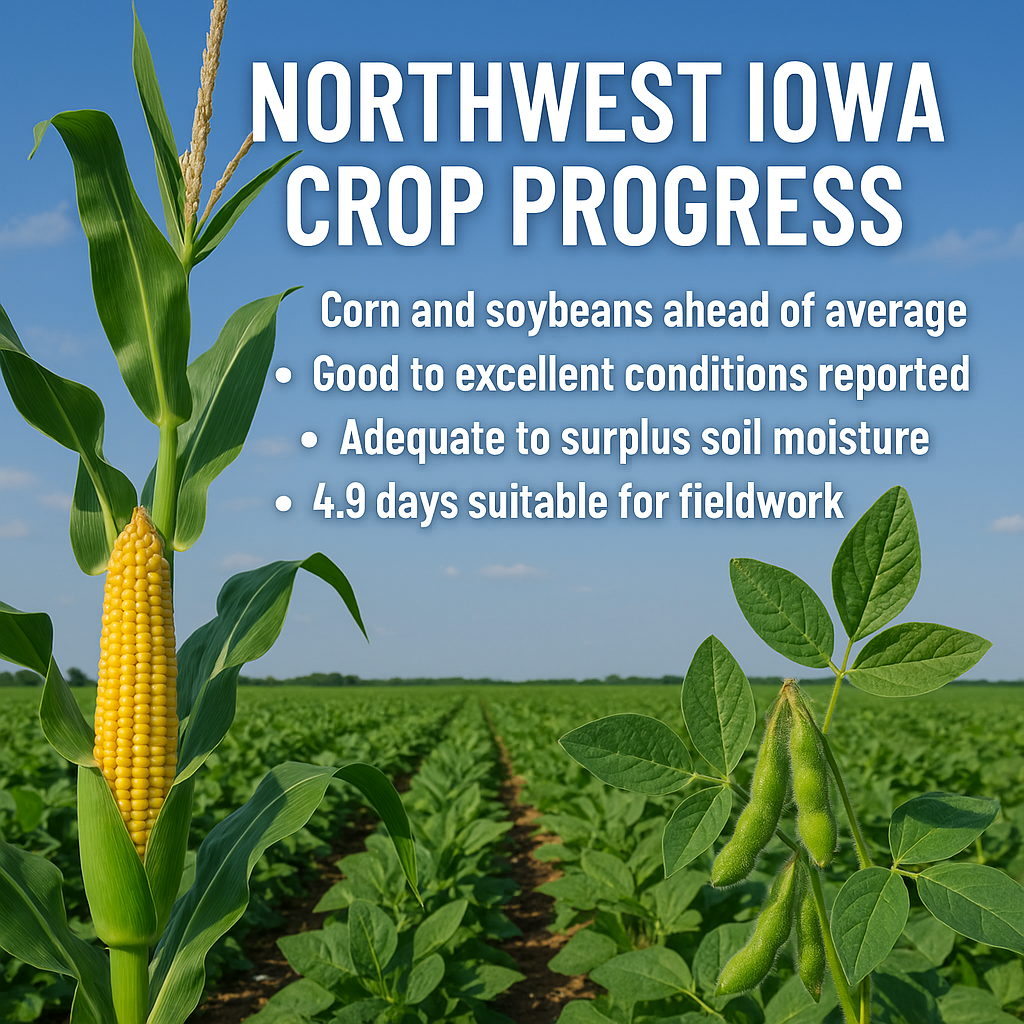Farmers across Northwest Iowa made steady progress last week as warm weather and scattered showers created nearly five full days suitable for fieldwork, according to the latest USDA Crop Progress Report.
Corn continues to surge ahead, with 82% of the crop now in the dough stage and 36% dented—both figures outpacing the state average. The crop’s condition remains strong, with the majority rated good to excellent and only 1% falling into the very poor category.
Soybeans are also thriving. Nearly all fields have bloomed, and 93% are setting pods, putting the Northwest District well ahead of last year’s pace. Like corn, soybean condition is holding firm, with 82% of Iowa’s crop rated good to excellent.
Soil moisture levels remain favorable for growth. Topsoil in the region is 68% adequate and 31% surplus, while subsoil moisture shows 73% adequate and 26% surplus. No areas reported shortfalls, a promising sign for continued crop development.
With 4.9 days suitable for fieldwork, slightly below the statewide average, Northwest Iowa producers were busy harvesting oats and hay, applying fungicides and insecticides, and preparing for the next phase of the growing season.
While parts of eastern Iowa saw above normal rainfall during the reporting period, this was the first week since mid-June in which statewide precipitation was below normal. Unseasonably warm and muggy conditions also persisted with positive departures in the two-to-four degree range; the statewide average temperature was 74.8 degrees, 2.9 degrees above normal. Guttenberg Lock and Dam reported the week’s high temperature of 98 degrees on the 17th, 16 degrees above normal. Spencer Municipal Airport reported the week’s low temperature of 53 degrees on the 13th, seven degrees below normal.
As August rolls on, Northwest Iowa’s fields are showing resilience and promise—setting the stage for a potentially strong finish to the season.
The full report is available at the USDA’s National Agricultural Statistics Service website.
















